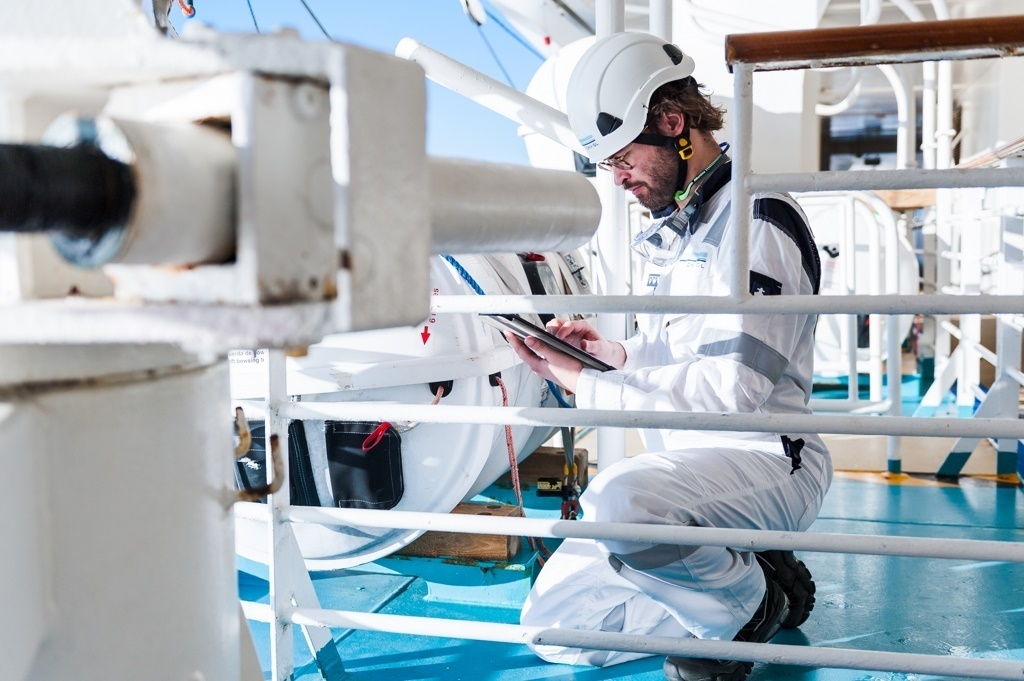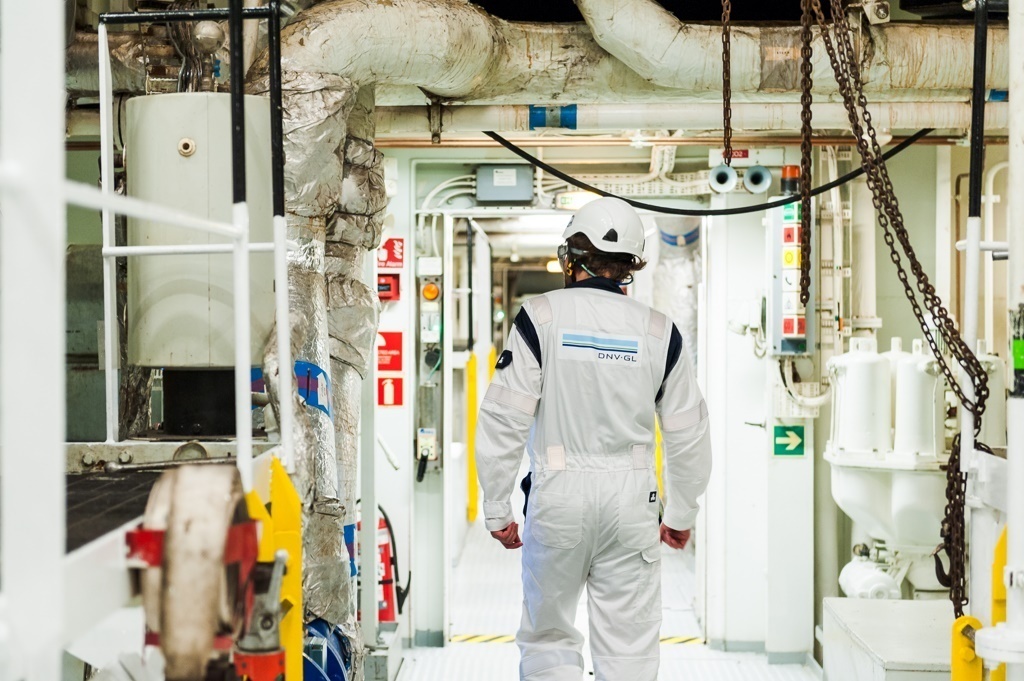“A cruise ship has a class cycle of five years, and then you have a renewal survey annually,” said Helge Hermundsgård, business development manager at DNV GL.
“For a cruise ship, that is a pretty thorough review of the ship’s technical integrity. It will take a team of two or three surveyors a full seven days,” he said, in the 2019 Drydocking and Refurbishment Report by Cruise Industry News. “They spend time going through all the maritime and safety features onboard, from fire prevention to water tightness, and the structural integrity of the steel itself. They check that everything is up to the mark, according to regulatory, statutory and class rules.”
A five-year survey, renewing the ship’s class approval, is even more thorough, Hermundsgård said.
“The ship is high and dry (out of the water), and that is when you see things you can’t see when the ship is in operation,” he said.
As ships get more advanced, the surveyors job is getting more complex, understanding the ship, its features and how it meets or exceeds rule sets.

As vessels age, steel integrity becomes a bigger agenda item during regular surveys. Another focal point has been fire prevention.
“The big ticket item when you look at accident statistics is a fire in the engine room,” Hermundsgård explained, noting a host of aggressive fire prevention investments and training across the board. “The likelihood of a fire today is far lower than five years ago.”
As drydockings and refit periods get larger, DNV GL has adapted its role to its clients, bringing in approval engineers to the drydock location, as opposed to waiting for a remote answer from an office in Europe.
Planning for big drydocks can start over a year out, with drawing and technical discussions between the cruise line and class society.
“It is important to work in a collaborative approach, starting with the early planning of the drydock, helping you identify potential issues and finding solutions to them,” Hermundsgård noted, adding there are always unexpected surprises.
“When you’re in a drydock the only thing you know for sure is the meter is ticking.”
As newbuilds usher in new entertainment, new dining and other innovative features, those items are often rolled back across the fleet, meaning a continuous large-scale drydock program has become normal for major brands.
That means weight management has become ever more important, as older ships don ducktails not only to improve fuel efficiency but also for stability reasons.
Hermundsgård explained that weight increases whether new features are added to a ship or not.
“That is why you include a margin in the newbuilding,” he said. “Just additional paint will add weight over time. You always add some new stuff onboard over the years. The key challenge is you need someone in the company that is monitoring how that is developing over time. It’s not difficult to adjust and manage the issue; but if you are not monitoring and managing it you will have an unpleasant surprise during a drydock if you haven’t done thorough calculations.”
—
Go inside the world of cruise ship drydocking and refurbishment with the 2019 Cruise Industry News Drydocking and Refurbishment Report, presenting a 100-page overview of the $3 billion annual cruise ship drydock and refit market including a full 2019, 2020, 2021 estimated drydocking scheduled based on available data and research.
The report offers interviews with key drydocking executives from cruise lines, suppliers and shipyards, as well as case studies, trend reports and much mor




